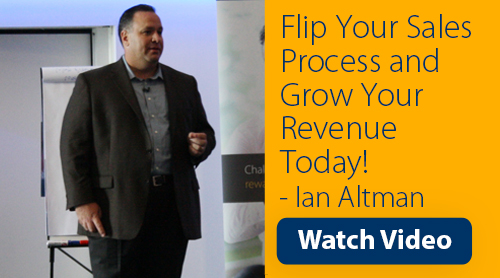
You were just informed that your company’s best customer sent an email saying they are not happy and are taking their business elsewhere. What do you do next?
Before we answer that question, let’s reflect on what led up to this point with the customer. Most of the proactive interaction with your customer probably involved things that we would never think of doing when they are unhappy. For example, you might regularly send them group emails via BCC saying that you hope they are doing ok. You might have another department call them to up sell additional services. Perhaps you may even send them gifts. Of course, if those “gifts” are in the form of your own branded merchandise, then that’s marketing… not a gift.
As a business leader, you know how to jump into action when a disaster occurs. But, what you do when the customer is almost out the door also offers insight into what you can do to avoid that situation all together.
Typical Responses
When a customer says they are leaving, the typical response probably includes the following steps:
- Listen and understand the customer’s situation: Where did we made mistakes that didn’t serve the customer’s needs? Is there something we can do (the answer is almost always ‘yes’); or is it something completely out of our control (usually we conclude this to make excuses and feel better about ourselves)?
- Identify areas where we can serve the customer better: What else could we do to provide more value to them? What areas have we overlooked that they might find incredibly valuable? What can we do to help them see greater results to make it worth their while to stay?
- Suggest a new strategy with milestones to confirm results: Once we see where we can better help them. Just saying “we’ll do better” is not going to be enough. So, we would put a plan in place and agree to check-in with them after 30 days, 90 days, and 180 days to confirm they are seeing the results they expected.
What’s Missing?
The above three responses all sounds reasonable. The problem is that’s the same drill everyone goes through once the customer relationship goes sour. What if you followed a similar principle before anything ever reached the point of a customer becoming unhappy and wanting to cancel?
Three Lessons for Success
Here are three key lessons to help you proactively stay in good standing with your best customers. Two of the concepts are elements we share in our book Same Side Selling. The third is from another source you need to learn more about.
- Focus on Results: Early in the sales process, you discuss with your customer how together you will measure the results of your efforts. The mistake most people make is they fail to monitor progress after the sale. If you track results, then you’ll know when your customer is meeting/exceeding their goals, or when they are falling short. If you ensure your customer sees the results they were buying, they become a great source for repeat and referral business.
- Exercise Restraint: Don’t get roped into doing things that are not your expertise. I’ve seen many companies fail not by doing what they are best at, but they fail doing something that went beyond their expertise. Here’s a good example, we are doing a renovation on our home right now. I worked with John, our contractor, on other projects in our home. For this larger renovation, I asked John if they could do the work. John said “I can do 80% of the job myself. But, there is a larger contractor who is the expert on managing the overall project when it gets to this size. I’d also want him to confirm the major structural changes.” This increased on confidence with John. He and the person he introduced have teamed for our project.
- First 100 Days Have you ever wondered why banks give you a gift after being a customer for a few months? Most customer retention and loyalty is built in the first 100 days of the relationship. Joey Coleman of Design Symphony developed a program called The First 100 Days. It is a brilliant plan of how to delight your customers in the first few months to create a remarkable experience. Joey’s brilliant approach is a critical element for our upcoming event Remarkable Growth Experience (USA). The corporate teams who attend this event embrace two intensive, hands on days to address content marketing with Marcus Sheridan, sales growth with me, and customer experience with Joey all integrated seamlessly.
If you Focus on Results, Exercise Restraint, and develop a plan for the First 100 Days, you’ll create remarkable experiences for your customers, drive repeat and referral business, and waste little time trying to do damage control on the account that got away.
It’s Your Turn
What early signs do you see that indicate a customer situation is going south? How do you address it? Drop me a question, and I'll offer suggestions.
Comment below.
More from Ian:


